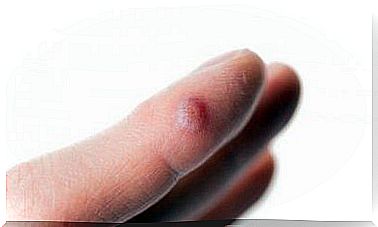Unrecognized Signs Of Lactose Intolerance
Even though lactose intolerance is not a serious condition, it does have symptoms that affect the quality of life of the person concerned.

We sometimes think that “not being tolerant” to certain foods is a new century invention. This intolerance has existed, however, since humans consume not only milk but also cereals and pulses.
We explain the signs of lactose intolerance below so you can determine whether or not you are having problems digesting this food.
What is lactose intolerance?
This is a disorder that occurs after the ingestion of lactose. It results from a deficiency in the enzyme responsible for digesting this substance.
Milk sugar is poorly absorbed and passes into the colon, where it ferments and generates gas.
Consumption of milk, yogurt or ice by an intolerant person does not produce serious or irreversible damage in the intestinal tract. The symptoms are nevertheless transitory.
Some people believe they suffer from this problem when it is due to excessive bacterial growth, celiac disease or intestinal inflammation.
Genetic mutations in humans made it possible to continue consuming dairy products into adulthood.
However, some people do not produce enough enzymes to absorb lactose. This is when the condition presents itself.
You should know that most patients have a primary intolerance, that is to say they can consume a cup of milk – or dairy product – without feeling any symptoms and even ingest dairy products in the dishes. without feeling any changes in the intestines.
You can also opt for products low in lactose or take lactase supplements.
Symptoms of lactose intolerance
Signs of this problem usually appear between 30 minutes and 2 hours after consuming a food that contains lactose.
The severity of the symptoms depends on each person, the amount ingested and the degree of insufficiency of the enzyme lactase in the stomach.
Be aware that the signs the body shows are not always specific to this condition.
Thus, they can be “shared” with other gastrointestinal diseases or pathologies – in particular acute gastroenteritis.
One “lead” that can be of use to us is to analyze when the symptoms appear. If they appear after ingesting milk, yogurt, cheese, ice cream etc., it is likely that this is due to lactose intolerance.
- The fermentation of lactose by the action of intestinal bacteria produces more acidic stools which can cause irritation and burns when using the toilet.
- This process can also cause bloating and abdominal pain, as well as an increased amount of gas (which lasts for several hours after ingesting lactose).
- It is very likely that the stools and gas have a very strong and foul odor.
Diarrhea or constipation can go hand in hand with intolerance, because the intestinal flora is unbalanced. Stomach cramps or colic are also very common.
In children or adolescents who are lactose intolerant, nausea or vomiting is common.
In chronic cases (secondary lactase deficiency), we can also find:
- A noticeable drop in weight
- Perianal reddening
- Abdominal spasms
- The explosive defection
In addition, these patients have skin problems, extreme fatigue and pain in the extremities.
How to detect lactose intolerance?
If you think you are suffering from this problem, it is essential to see a doctor. The professional will tell you about different studies that can diagnose the condition.
The most used tests are as follows:
The glycemic response test
- First, we do a blood test to find out the initial blood sugar level.
- Then the patient receives an overload of 50 grams of lactose every 30 minutes for 2 hours (4 ingestions).
- Then we do another blood test to find out the amount of glucose.
If the clues are the same, the lactase is not acting as it should.
However, this test is not specific enough because there are other pathologies which can alter blood sugar levels, for example diabetes mellitus.
The breath hydrogen analyzer
This is the most widely used method for detecting lactose intolerance. The person should consume a solution with lactose, and at 15 minute intervals, they blow into airtight bags.
When the sugars in milk are not digested and make their way to the intestine, bacteria use them as food and produce hydrogen.
So, if the breath contains a good amount of this compound, it is likely that it is due to a problem with the digestion of dairy products.
Small intestine biopsy
Esophageal or gastrointestinal endoscopy provides the necessary tests for this study.
These fragments of intestinal tissue are subsequently analyzed in the laboratory to determine the presence or absence of lactase in the mucosa.
The acidity of the stool
This test is mainly used in small children because at this age, other tests are impractical or risky.
The genetic test
The objective of the evaluation is to detect a primary intolerance that the MCM6 gene generates.
A patient’s blood or saliva test is sufficient to analyze the two polymorphisms associated with this condition.









